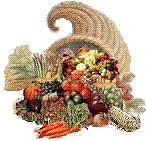
you came from
Jicama or Yam Bean
The yam bean, scientifically classified as Pachyrhizus erosus (L.) and P tuberosus (Lam.), is also called jicama, Mexican yam bean, ahipa, and Mexican water chestnut. The yam bean is a member of the bean family, Leguminosae; subfamily: Papilionoideae. This bean stems from exotic origins: P. erosus originated in Mexico, while P. tuberosus, a larger root species believed to be selected for larger root size, has its origins in the Amazon Basin.
The yam bean is a short-day plant, and is a high-protein, low fat dietary staple in many areas. The nutrient content per pound of yam beans totals: 46 calories, an 88% moisture content, a 1.6% protein content, an 0.2% fat content, a 10% carbohydrate, and a 1.3% fiber content.
The yam bean is grown primarily for its root, which is quite crisp when peeled and sliced. It can be eaten raw, garnished with chili pepper and lemon juice, salted, with dips, or stir-fried as a replacement for water chestnuts. Because the yam bean is a legume, it fixes nitrogen and produces pods and seeds. Although the immature pods are eaten by some, any existing hairs removed by rubbing in sand, it is suggested that the pods not be eaten. Mature pods and seeds contain ROTENONE, a potent poison.
The seeds should be started indoors, in an area with plenty of sun and warmth. They may be transplanted after the danger of frost has passed, in a 12" by 24" sunny, warm spot with loose, well-drained soil. Because the yam bean is a short-day plant, it may not flower in northern states before a killing frost occurs. If flowering does occur, the flower should be removed, as it will reduce the root size.
The optimal root size is four to six inches; larger roots may be "woody." Due to a high moisture content within the root, shrinkage may occur in open, dry storage. The roots may be safely stored in the refrigerator, or left in the ground with the tops of the beans cut off, until it is to be used. If employing the latter method, the roots must be removed before the first frost, as ground frosts would probably injure the roots and will kill the tops.
SOURCES:
Tropical legumes: Resources for the future, 1979.
National Academy of Science, Washington, D.C. 20418.
"Hortopics" newsletter, Jan 1983
H.C. Bittenbender
Michigan State University Dept. Of Horticulture
